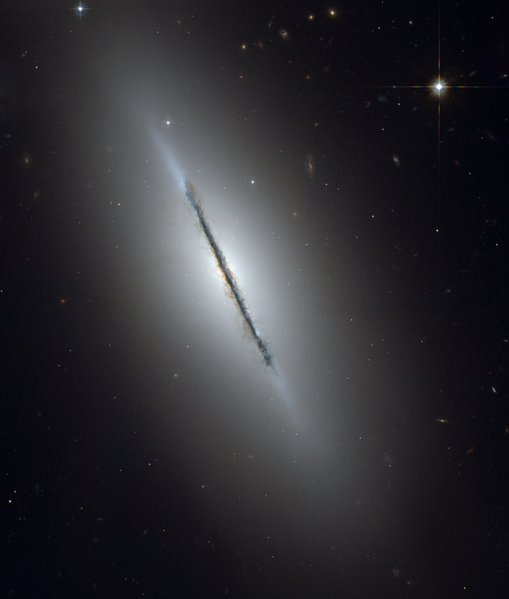Fil:Ngc5866 hst big.png
Udseende

Størrelse af denne forhåndsvisning: 509 × 599 pixels. Andre opløsninger: 204 × 240 pixels | 408 × 480 pixels | 652 × 768 pixels | 870 × 1.024 pixels | 1.739 × 2.048 pixels | 3.190 × 3.756 pixels.
Fuld opløsning (3.190 × 3.756 billedpunkter, filstørrelse: 25,78 MB, MIME-type: image/png)
Filhistorik
Klik på en dato/tid for at se filen som den så ud på det tidspunkt.
| Dato/tid | Miniaturebillede | Dimensioner | Bruger | Kommentar | |
|---|---|---|---|---|---|
| nuværende | 16. feb. 2009, 19:38 |  | 3.190 × 3.756 (25,78 MB) | Spencer | {{Information |Description={{en|1=From original NASA press release: :This is a unique view of the disk galaxy en:NGC 5866 tilted nearly edge-on to our line-of-sight. Hubble's sharp vision reveals a crisp dust lane dividing |
Filanvendelse
Den følgende side bruger denne fil:
Global filanvendelse
Følgende andre wikier anvender denne fil:
- Anvendelser på ab.wikipedia.org
- Anvendelser på ace.wikipedia.org
- Anvendelser på af.wikipedia.org
- Anvendelser på af.wikibooks.org
- Anvendelser på af.wikiquote.org
- Anvendelser på af.wiktionary.org
- Anvendelser på ak.wikipedia.org
- Anvendelser på als.wikipedia.org
- Anvendelser på am.wikipedia.org
- Anvendelser på am.wiktionary.org
- Anvendelser på ang.wikipedia.org
- Anvendelser på ang.wiktionary.org
- Anvendelser på an.wikipedia.org
- Anvendelser på an.wiktionary.org
- Anvendelser på arc.wikipedia.org
- Anvendelser på ar.wikipedia.org
- Anvendelser på ar.wikibooks.org
- Anvendelser på ar.wikinews.org
- Anvendelser på ar.wikiquote.org
- Anvendelser på ar.wikisource.org
- Anvendelser på ar.wikiversity.org
- Anvendelser på ar.wiktionary.org
- Anvendelser på arz.wikipedia.org
- Anvendelser på ast.wikipedia.org
- Anvendelser på ast.wiktionary.org
- Anvendelser på as.wikipedia.org
- Anvendelser på av.wikipedia.org
- Anvendelser på ay.wikipedia.org
- Anvendelser på az.wikipedia.org
- Anvendelser på az.wikibooks.org
- Anvendelser på az.wikiquote.org
- Anvendelser på az.wikisource.org
- Anvendelser på az.wiktionary.org
- Anvendelser på bat-smg.wikipedia.org
- Anvendelser på ba.wikipedia.org
- Anvendelser på bcl.wikipedia.org
- Anvendelser på be-tarask.wikipedia.org
- Anvendelser på beta.wikiversity.org
- Anvendelser på be.wikipedia.org
- Anvendelser på be.wikibooks.org
Vis flere globale anvendelser af denne fil.
